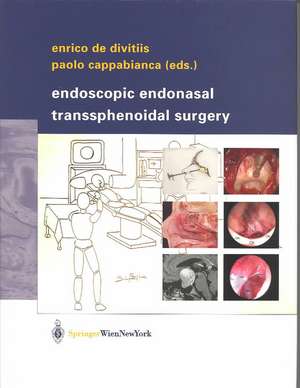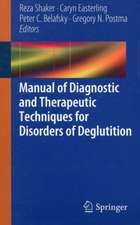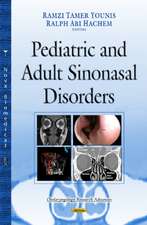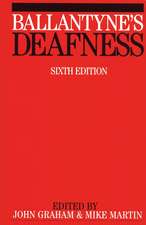Endoscopic Endonasal Transsphenoidal Surgery
Editat de Enrico de Divitiis, Paolo Cappabiancaen Limba Engleză Hardback – 19 aug 2003
Preț: 1022.41 lei
Preț vechi: 1076.22 lei
-5% Nou
Puncte Express: 1534
Preț estimativ în valută:
195.69€ • 203.52$ • 163.99£
195.69€ • 203.52$ • 163.99£
Carte tipărită la comandă
Livrare economică 10-15 martie
Preluare comenzi: 021 569.72.76
Specificații
ISBN-13: 9783211009727
ISBN-10: 3211009728
Pagini: 220
Ilustrații: XVI, 203 p. 49 illus.
Dimensiuni: 210 x 279 x 19 mm
Greutate: 0.98 kg
Ediția:2003
Editura: SPRINGER VIENNA
Colecția Springer
Locul publicării:Vienna, Austria
ISBN-10: 3211009728
Pagini: 220
Ilustrații: XVI, 203 p. 49 illus.
Dimensiuni: 210 x 279 x 19 mm
Greutate: 0.98 kg
Ediția:2003
Editura: SPRINGER VIENNA
Colecția Springer
Locul publicării:Vienna, Austria
Public țintă
Professional/practitionerCuprins
1. Evolution of transsphenoidal surgerya.- 2. The endoscope, endoscopic equipment and instrumentation.- 2.1 The endoscope.- 2.2 Endoscopic equipment.- 2.3 Surgical instruments for endoscopic endonasal pituitary surgery.- 3. Endoscopic anatomy along the transnasal approach to the pituitary gland and the surrounding structures.- 3.1 Nasal cavity.- 3.2 Sphenoid sinus.- 3.3 Ethmoid labyrinth (complex).- 3.4 Sellar region.- 3.5 Suprasellar region.- 3.6 Parasellar region.- 3.7 Retrosellar - retroclival region.- 4. The role of the endocrinologist.- 4.1 PRL-secreting pituitary adenomas: is there still a role for neurosurgery?.- 4.2 GH-secreting pituitary adenomas: the dilemma on the primary therapy.- 4.3 TSH-secreting pituitary adenomas: the usefulness of somatostatin analog therapy.- 4.4 ACTH-secreting pituitary adenomas: a challenge for neurosurgeons, endocrinologists and radiotherapists.- 4.5 Clinically nonfunctioning pituitary adenomas: is there any new on pharmacotherapy?.- 5. The role of the neuroradiologist.- 5.1 Identification of the lesion.- 5.2 Follow-up after medical therapy.- 5.3 Pre-surgical planning.- 5.4 Post-surgical follow-up.- 6. The role of the ophthalmologist.- 6.1 Visual field defects.- 6.2 Reduced visual acuity.- 6.3 VEP abnormalities.- 6.4 Dischromatopsy.- 6.5 Eye motility impairment.- 7. Endoscopic endonasal transsphenoidal approach to the sellar region.- 7.1 Indications.- 7.2 Surgical planning.- 7.3 Operating theatre.- 7.4 Surgical procedure.- 7.5 Results & complications.- 7.6 Advantages & problems of the endoscopic technique.- 8. The role of the anesthesiologist.- 8.1 Anesthetic management, patient positioning and operating room set-up.- 9. Extended endoscopic approaches to the skull base Anterior Cranial Base CSF leaks.- 9.1 Anterior Cranial Base CSFleaks.- 9.2 Approach to the cavernous sinus.- 9.3 Extended endoscopic endonasal transsphenoidal approaches to the suprasellar region, planum sphenoidale & clivus.- 10. The role of the neuropathologist.- 11. Conclusions.
Recenzii
"... a stimulating book, that should be part of every neurosurgical and E.N.T.-department library." Annals of Anatomy
Caracteristici
First monography on endoscopic endonasal skull base surgery by the pioneers Detailed operative procedures, many colour photos and drawings Shows hints and pitfalls













